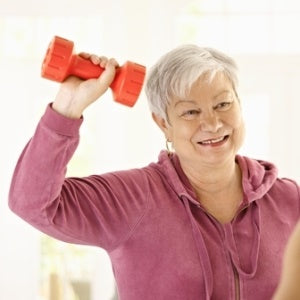Aging in place requires planning ahead.
Want to live in your home for the rest of your life? Boost your odds by "future-proofing" now. Older adults who are most likely to remain in their homes have successfully arranged their houses and lives in ways that maximize their ability to weather the physical and practical setbacks often associated with getting older -- setbacks that can make living independently more challenging.
Here are seven ingredients you'll want to have in place in order to age in place:
-
A single-story floor plan
Sure you can get up and down stairs easily now. And sure, many spry octogenarians can do the same. But what if you break a bone and require extended bed rest? What if you become confined to a wheelchair? It's possible to convert a downstairs room to a bedroom, but not so easy to live on one floor if the only shower is on an upper floor.
Think ahead about how you can convert to all-on-one-floor living, should the need arise. You may need to remodel to add a full bath on the ground level, for example, or insert a door to provide privacy in a downstairs room.
The living space also needs to be all on one level. Split-level homes can be problematic because wheelchairs and walkers can't easily navigate from one room to the next.
-
Basic safety upgrades
One's risk of falling increases with age, often due to medications or certain health conditions. Installing secure grab bars and wall-to-wall carpeting (or bare wood floors, no throw rugs) are smart safety upgrades that will help you avoid broken hips -- one of the most common reasons older adults are forced to leave their homes.
Familiarize yourself with the basics of bathroom safety and other home care safety, and start to slowly make your home safer for future needs.
Don't overlook good lighting. Dark hallways and burned-out bulbs are a common contributor to accidental falls. Did you know an 85-year-old needs about three times as much light as a 15-year-old does to see the same thing?
-
Accessible utilities
Sure you can reach tall cupboards, stacked washer-dryers, and back burners easily now. But it's likely that won't always be the case. Even something as simple as a doorknob may be difficult to open if you develop arthritis or other disabilities.
At least one lower countertop, a taller toilet, and a front- (rather than top-) loading washer and dryer raised up from floor level are all examples of slightly modified household items that become easier to use later in life.
Lever-type door handles, paddle faucets, and curbless showers make these devices easy to use even in the event of arthritis or other disabilities affecting mobility.
4. Update doors and doorways.
At any age, you want to be sure you can get from room to room without trouble. Specifically: * Replace doorknobs with levers, which push down easily. * If possible, keep door frames at 36 inches (or more) wide to allow wheelchair access. * Zero threshold doors are easiest to navigate for those in wheelchairs or using walkers. * Install a ramp to at least one entryway into the house, if necessary. A simple wooden ramp is the least expensive option, but add slip-resistant material to prevent accidents.
5. Add accessible outlets and switches.
The most accessible homes have easy-touch light switches about 42 inches off the ground. Ample electrical outlets throughout the house can handle any necessary medical equipment; outlets should be 18 inches from the floor for optimal accessibility.
6. Modify stairways.
To allow for the possibility of a chairlift in the future, stairways should be four feet wide. The steps should be deep enough to accommodate the entire foot, and you’ll want to install treads.
7. Install grab bars and handrails.
One important way to prevent accidents is to install handrails on both sides of stairways. In the bathroom, put in grab bars by the toilet and in the bathtub and shower. A tub transfer seat can be useful, though the best option is to remove the tub altogether and instead make sure the shower is safe to use.
8. Add light.
Because eyesight tends to worsen with age, it’s a good idea to add more and brighter lights in the house, for better visibility.
Familiarize yourself with the principles of universal design, for a home you can live in forever -- bringing together safety, convenience, and style for residents of any age.
Stronger Seniors Chair Exercise DVD Programs


